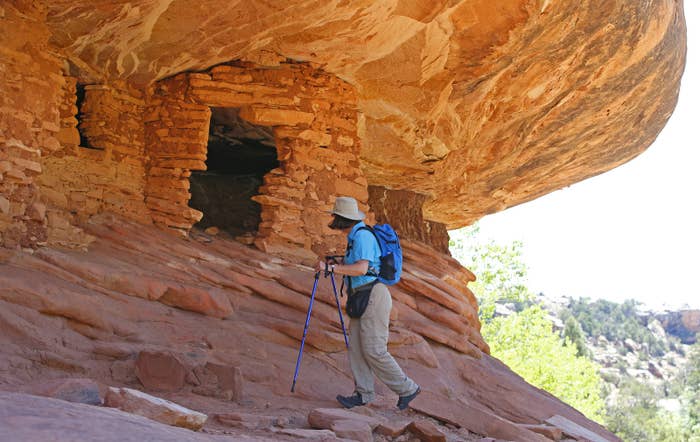
Newly released documents show that oil and coal exploration were recurring considerations as President Trump decided to dramatically shrink two Utah national monuments, seemingly contradicting claims made by the White House and confirming suspicions of administration critics.
The documents, obtained by the New York Times, show that the Trump administration looked at "mineral potential" in Bears Ears National Monument just days after the president took office. A few months later, Sen. Orrin Hatch, a Utah Republican, sent a map to the Trump administration showing a revised potential monument — which was designated by former president Obama — that would "resolve all known mineral conflicts."
The documents include emails, reports, and various memos detailing years of government work on the two national monuments in Utah during both the Obama and Trump administrations. The Times forced the release of the documents after suing as part of a public records request.
The emails and memos show that in 2017, Trump's Interior Department looked at the value of coal deposits located within the boundaries of Grand Staircase-Escalante National Monument, which then-president Clinton created in 1996.
After a review, Trump slashed the size of both monuments in December. The reduced version of Bears Ears follows Hatch's map, and coal-rich areas of Grand Staircase-Escalante were excluded from the broken-up version of that monument.
Trump framed the reductions as a state's rights issue, saying at the time that he was reversing "federal overreach."
But conservation groups told BuzzFeed News that the newly released documents show the changes to the monuments were driven by extracting fossil fuels on public lands.

"This is about as surprising as finding out the pope is Catholic," said Brett Hartl, government affairs director at the Center for Biological Diversity. "Virtually every decision the Interior Department has made during this administration is based on what the oil and gas industry wants."
"We knew that this was driven largely by politics but when you see the documents, when you see that Sen. Hatch drew the boundaries reportedly to void all conflicts with mineral extraction, it really puts a fine point on it," said Heidi McIntosh, a managing attorney at Earthjustice.
"The newly released emails underscore our worst fears — that Interior Secretary [Ryan] Zinke and President Trump are hellbent on selling out our public lands to reward the fossil fuel industry," added Nada Culver, senior counsel at the Wilderness Society.
However, Utah lawmakers — who have said the monuments brought economy-killing regulation and left local residents out of the decision-making process — objected to that characterization Friday, contending that resistance to the monuments was not about oil, gas, or coal interests.
"This has never been about energy development," said Lee Lonsberry, a spokesperson for Rep. Rob Bishop, a Utah Republican, while pointing to a proposed federal law that would limit activity like oil and gas drilling on public lands. The monument designations, he said, had a negative impact on local economies and public schools, which in some cases can collect money generated from the land.
Hatch, in a statement, said the newly released documents "revealed that the Senator’s top priority stated in private was the same priority he discussed in public: looking out for the people of Utah."
A spokesperson for Utah Gov. Gary Herbert said that concerns about the monuments were "never about mineral resources, but rather about the proper process for protecting the public lands in this area."
"Governor Herbert firmly believes that mineral extraction should be off the table in the Bears Ears Region," the spokesperson added.
